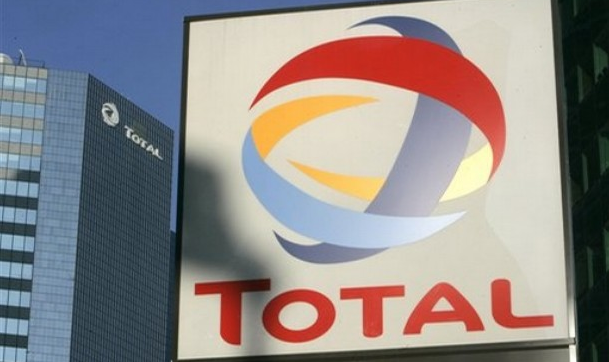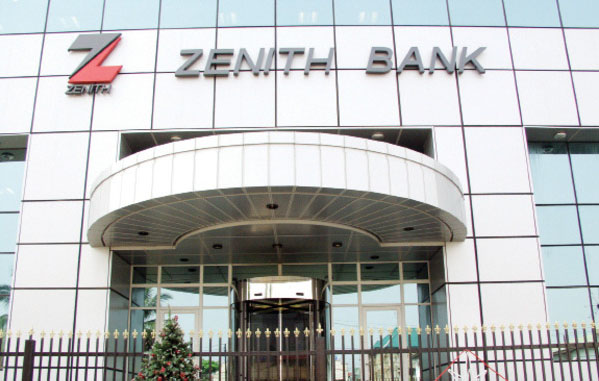The insurance sector isn’t getting the attention of investors in the current stock market rally that has seen some share prices double within three weeks of the new year. The sector continues to face weak growth in revenue and rising underwriting expenses.
The core business of underwriting remains constrained in the face of operating difficulties but there are reasonable improvements in investment incomes. The operators here are generally profitable but many are still unable to establish stability in profit performance and there is little or nothing to show in dividend records.
A rise and fall pattern in revenue and profit has marked the insurance sector for several years but an increased number of operators entered the path of recovery and growth in 2017. Yet the records are tattered: some that were able to grow revenue were losing profit as per the interim reports. Their records show that there is a wide variation in performances in terms of different pictures of revenue as well as the cost-income relationships inherent in the business.
This situation gives rise to an operating climate in the insurance sector where many companies swing back and forth between profit and loss on a continuing basis. There is no general earnings pattern for the operators here. The year of a major profit drop for one company can be one of a big rebound for another depending on the specific cost and revenue challenges in the particular year.
Advertisement
Investment risk therefore remains high in this sector for now, as earnings swing widely from year to year. With the recovery in share values however, a likely further boost in investment incomes offers a link through which insurance stocks may join the stock market bull in the medium-term.
African Alliance Insurance
African Alliance Insurance plunged into a deep loss at the end of the third quarter, as revenue dropped during the period. The collapse of gross premium income followed a drop of annuity that contributed 75% of gross premium written in the same period in 2016 to insignificance at the end of September 2017. Amid the revenue fall, net claims expenses grew by 31%, resulting in an underwriting loss of N2.81 billion. An increase of 16% in total investment income to N2.62 largely covered the underwriting loss but there was no revenue to meet administrative and other expenses. The company closed the third quarter with a loss of N2.19 billion.
AIICO Insurance
AIICO Insurance faced the challenges of declining revenues and rising costs in the 2017 interims and that affected most income and expense lines. Against a 10% decline in gross premium income at the end of the third quarter, reinsurance expenses rose by 11%, resulting in a drop of 13% in net premium income. Increases of 38.5% in net claims expenses and 30% in underwriting expenses led to an underwriting loss of about N838 million at the end of September.
Advertisement
Profit was made possible for the company by improvements in investment income and other non-core earning lines and more so by major drops in operating and tax expenses. These developments hold the promise for AIICO’s profitability in the 2017 fiscal year.
Continental Reinsurance
Continental Reinsurance kept underwriting expenses under control at the end of the third quarter despite a major increase in claims expenses. The company grew underwriting profit by 178% to over N2 billion at the end of September.
Profit capacity was however affected by a drop of over 92% in foreign exchange gain and an upsurge of 140% in administrative expenses. Other compensating changes on the income statement during the period include a strong growth of 128% in other income and a sharp drop of 22% in impairment on financial assets. The favourable developments were however insufficient to fully compensate for the drop in foreign exchange gain, which accounted for much of the profit the company posted in 2016.
Cornerstone Insurance
Cornerstone Insurance recorded a decline in business volume at the end of the third quarter, which led to an underwriting loss of N728 million. Net claims expenses rose by 32% against a flat growth in net underwriting income. Net underwriting expenses also grew by 21% while the company also suffered a drop of 93% in operating income during the period.
Advertisement
The company’s main revenue lines were constrained but cost could not be contained, which explain a big increase in the loss position to N1.18 billion at the end of September. The loss position is likely to follow the company to full year in the light of inability to grow business volume.
Consolidated Hallmark Insurance
Consolidated Hallmark Insurance was unable to grow revenue while expenses rose rapidly, which undermined profit capacity at the end of the third quarter. Against a marginal increase in net underwriting income, claims incurred grew by 15% while underwriting expenses declined marginally. That lowered underwriting profit by 5.6% to N837 million.
Investment income nearly doubled but that was punctuated by a drop of over 74% in other income. An increase of 20% in management expenses also constrained profit capacity during the period. The full year outlook indicates a moderate improvement in gross premium income but profit prospects are uncertain.
Custodian & Allied
Custodian & Allied maintained stable growth in both revenue and profit at the end of the third quarter. It had grown revenue and profit numbers by 29% and 27% in 2016 respectively. Revenue growth was driven by investment income, which rose by 50% year-on-year to N4.93 billion at the end of September 2017.
Advertisement
Costs made some incursion into revenue during the review period, which prevented the company from improving profit at equal pace with revenue. The cost increases came from operating expenses, which grew by 23% and income tax expenses, which rose by 17%. The company closed the 2016 operations with a revenue of a little over N28 billion and with an after tax profit of N5.33 billion.
Equity Assurance
Equity Assurance reduced its loss position at the end of the third quarter from a much bigger loss in the same period in 2016. It suffered a drop of over 34% in net premium income that caused a fall of 35% in net underwriting income, leading further to a drop of 26% in underwriting profit. Major cost savings were achieved from a 67% cut down in other operating expenses, a 39% drop in total underwriting expenses and an 11% cut down in finance cost. Personnel expenses also went down by 37% during the review period.
Advertisement
Great Nigeria Insurance
Great Nigeria Insurance recorded a drop of 29% in reinsurance expenses against a 45% growth in gross premium income at the end of its third quarter operations in September 2017. That lifted net premium income by 65% to N2.66 billion. Despite a major drop in fee income, total underwriting income still grew by 58% to N2.73 billion.
A doubling of net claims expenses pushed total underwriting cost up by close to 84% to N1.41 billion but underwriting profit still grew by over 37% to N1.31 billion at the end of September. A strong growth in total investment income stretched the increase in net operating income, which grew by 41% to N1.88 billion. Major increases in administrative and finance expenses lowered net profit margin from 16.8% to 13.7% over the review period. That hindered the company from growing profit as fast as revenue at the end of the third quarter.
Advertisement
Lasaco Assurance
Lasaco Assurance gained revenue and lost profit at the end of its third quarter operations. The underwriting business showed a reasonable improvement that changed the company’s position from an underwriting loss in the same period in 2016 to an underwriting profit of N618 million at the end of September 2017. That was made possible by a rise of 62% in net insurance premium earned and a 56% advance in net underwriting income.
A sharp drop of nearly 85% in other income is however the cause of the profit drop the company recorded at the end of the third quarter. A leap of 122% in investment income to N670 million as well as declines in administrative and tax expense were more than countered by the drop in other income.
Advertisement
Law Union & Rock Insurance
Law Union & Rock Insurance ceded a significantly increased share of its business to reinsurers at over 42% at the end of third quarter operations compared to 32% in the same period in 2016. That caused declines all the way from net premium income, net underwriting income to underwriting profit. An increase of 66% in investment income however countered the decline in underwriting profit and raised operating profit by 19% to N728 million.
Profit growth is expected to step up further in the final quarter. The company ended the 2016 trading with a gross premium income of close to N4 billion and an after tax profit of about N562 million.
Linkage Assurance
Linkage Assurance reaped a windfall at the end of the third quarter despite a slight decline in revenue. The windfall came from investment income, which multiplied by 768% to N2.99 billion year-on-year to September 2017. In addition to that, net fair value gain on financial assets also advanced by 135% to N716 million over the same period.
This investment income constitutes mostly dividends from the company’s financial assets of about N19.62 billion at the end of September. It grew the investment assets by more than 32% over the nine months of the year. Despite a decline in claims expenses and a slight increase in underwriting expenses, underwriting profit sank by nearly 88%. The big harvest of investment income however changed the company’s earnings for the period.
Mansard Insurance
Mansard Insurance grew revenue but lost profit at the end of the third quarter due to rising claims and underwriting expenses. Net claims expenses rose ahead of net underwriting income at 27% compared to 25% and net underwriting expenses grew even faster at 35%. That caused a decline of 6% in underwriting profit to N2.15 billion at the end of September 2017. Total investment income also went down by 8% to N5.39 billion while total operating cost rose by 7% to N4.40 billion. Despite a drop of 69% in income tax expense, the company lost profit at the end of the third quarter.
Despite the year-on-year drop, after tax profit was already at par with the full year figure for 2016 at the end of the third quarter. The company achieved strong growths in both revenue and profit in 2016 at 34% and 58% respectively.
Mutual Benefits Assurance
Mutual Benefits Assurance showed an outstanding earnings performance with a big turnaround from 11% growth in revenue. The profit boost came from investment income, which rose by 34% to N1.06 billion, other income, which improved by 24% to N162 million as well as a drop of 85% in foreign exchange losses. The company recorded a drop of 14% in underwriting profit, which came to N3.73 billion at the end of the third quarter. This follows an increase of over 37% in net underwriting expenses.
NEM Insurance
NEM Insurance recorded a stronger growth in profit than gross premium income at the end of the third quarter, 2017. A drop of 48.6% in claims expenses accounted for an improvement the company made in underwriting profit, which amounted to N3.40 billion at the end of September. A major increase of over 64% in investment income enabled the company to grow profit to N1.69 billion at the end of the review period.
Niger Insurance
Niger Insurance achieved one of the highest revenue improvements among insurance companies at the end of third quarter operations. It is expected to make a rebound in revenue after losing 52% of gross premium income in 2016.
An outstanding increase of over 439% in reinsurance expenses claimed a good part of the gross premium income but the company still raised net premium income by 20%. A limited growth in total underwriting expenses permitted an increase of 24% in underwriting profit to N1.76 billion at the end of September 2017.
There was a drop of 15% in management expenses, which enabled the company to make a rebound from a loss of N407 million in the same period in the preceding year. The company is expected to rebuild gross premium income at full year after a drop of 52% in 2016. After tax profit dropped by more than 93% at the end of 2016 to N42 million. The third quarter profit figure of N364 million is well above the full year figure for 2016, indicating a major rebound in profit for the company in 2017.
Prestige Assurance
Prestige Assurance showed stability in operations on both sides of costs and incomes at the end of the third quarter of 2017. It combined improvements in income lines with some cost savings to lift profit during the period. Underwriting profit still rose moderately to N298 million, as underwriting expenses claimed an increased share of total underwriting income.
The main strength for the bottom line came from a 70.7% growth in investment income and a major improvement in net fair value gain. These resulted in a growth of 40% in net operating income, which was further reinforced by a moderation in management expenses.
Regency Alliance Insurance
Regency Alliance Insurance recorded a strong growth in revenue at the end of the third quarter but its cost structure did not permit the increase in earnings to flow down to the bottom line. Net premium and underwriting incomes grew reasonably during the period but a rise of 53.6% in claims expenses left underwriting profit only moderately improved at N1.39 billion at the end of September. Investment income grew by 76%, which was more than countered by a growth of 53% in personnel expenses and a 54% advance in other operating expenses.
Royal Exchange
Royal Exchange ceded a large proportion of its gross premium income at the end of the third quarter and that caused a decline of 7.7% in net premium income. A 66% leap in fees and commission income compensated largely for this but net underwriting income still declined. There were moderate cost savings from net claims and underwriting expenses, as total underwriting expenses increased moderately but underwriting profit still dropped by 27.6% to N1.43 billion.
The big boost to profit came from an increase of over 286% in investment income to N1.14 billion at the end of September. That, plus a change from a net fair value loss on financial assets to a gain over the review period, supported net income – which still declined moderately. A reduction in management expenses enabled the company to push up profit to N240 million at the end of the third quarter.
Sovereign Trust Insurance
Sovereign Trust Insurance made a big rebound in earnings at the end of the third quarter of 2017 after revenue and profit hit the lowest levels in several years in 2016. The full year after tax profit of N23 million in the prior year is nothing to compare to the height of over N668 million the company attained at the end of third quarter operations in September 2017. Also gross premium income stood at 14% above the 2016 full year figure at the end of September.
Profit boost came from a 62% leap in investment income to about N384 million and a drop of over 10% in management expenses. These complemented an improvement of 17% in underwriting profit, which stood at N1.34 billion. The full year outlook indicates revenue in excess of N10 billion and after tax profit in the region of N900 million for Sovereign Trust Insurance in 2017.
Staco Insurance
Staco Insurance encountered two major cost increases that prevented it from converting revenue into profit. These are claims expenses, which grew by 144% to N1.35 billion and interest payment, which rose by 43% to N228 million at the end of third quarter operations. The two cost increases consumed almost all the additional revenue generated during the period. Underwriting profit therefore declined by 11% to N1.72 billion at the end of September 2017.
An increase in investment income as well as a drop of 41% in administrative expenses however enabled the company to cut down its net loss position from N1.20 billion in the same period in 2016 to N11 million.
Standard Alliance Insurance
Standard Alliance Insurance lost revenue and profit, as costs grew at the end of the third quarter. The decline in revenue against rising costs saw declines all the way from net premium income to underwriting profit – which went down by over 35% to N1.42 billion at the end of September 2017. A near tripling of claims expenses largely accounted for a 48% growth in total underwriting cost.
There was an upswing in investment income from a loss position in the same period in 2016 to a positive figure of N88 million at the end of September. There was also a shift from an exchange loss of N444 million in 2016 to a moderate gain at the end of September.
Unity Capital Assurance
Unity Capital Assurance used effective cost control to reinforce an improvement in revenue and therefore ended the third quarter trading with a stronger growth in profit. Net premium income grew by 15% to N1.30 billion, as re-insurance expenses were moderate. A drop of 14% in claims expenses pushed up underwriting profit by 36% to N513 million.
Other favourable developments that improved profit performance include an increase of 23% in investment income and a complete drop of fair value loss on assets. A moderate increase in management expenses permitted the revenue gains to flow down to the bottom line – which came to N206 million at the end of the third quarter.
Wapic Insurance
Wapic Insurance was still losing profit at the end of the third quarter after a 55% drop in profit in 2016. The company recorded stable growth in revenue but profit fell as revenue grew. The problem isn’t in the core business of underwriting, as net premium income grew by 34% and outstanding claims dropped by 25%. That resulted in a 107% leap in underwriting profit to N1.29 billion at the end of September.
The problem came from a drop of 41% in total investment income, resulting in a fall of over 17% in net income to N3.22 billion. Despite a slight decline in total operating cost, net income was insufficient to cover it. The company therefore recorded an operating loss at the end of September 2017. A remedy came from associate profit, which turned an operating loss into a pre-tax profit. That was also the company’s earnings story 2016.
Based on the third quarter performance, Wapic Insurance is expected to close the year with revenue approaching N10 billion and after tax profit may exceed the N900 million mark. The company raised gross premium income by 23% to N7.59 billion in 2016 while profit dropped by 55% to N586 million.
Add a comment







